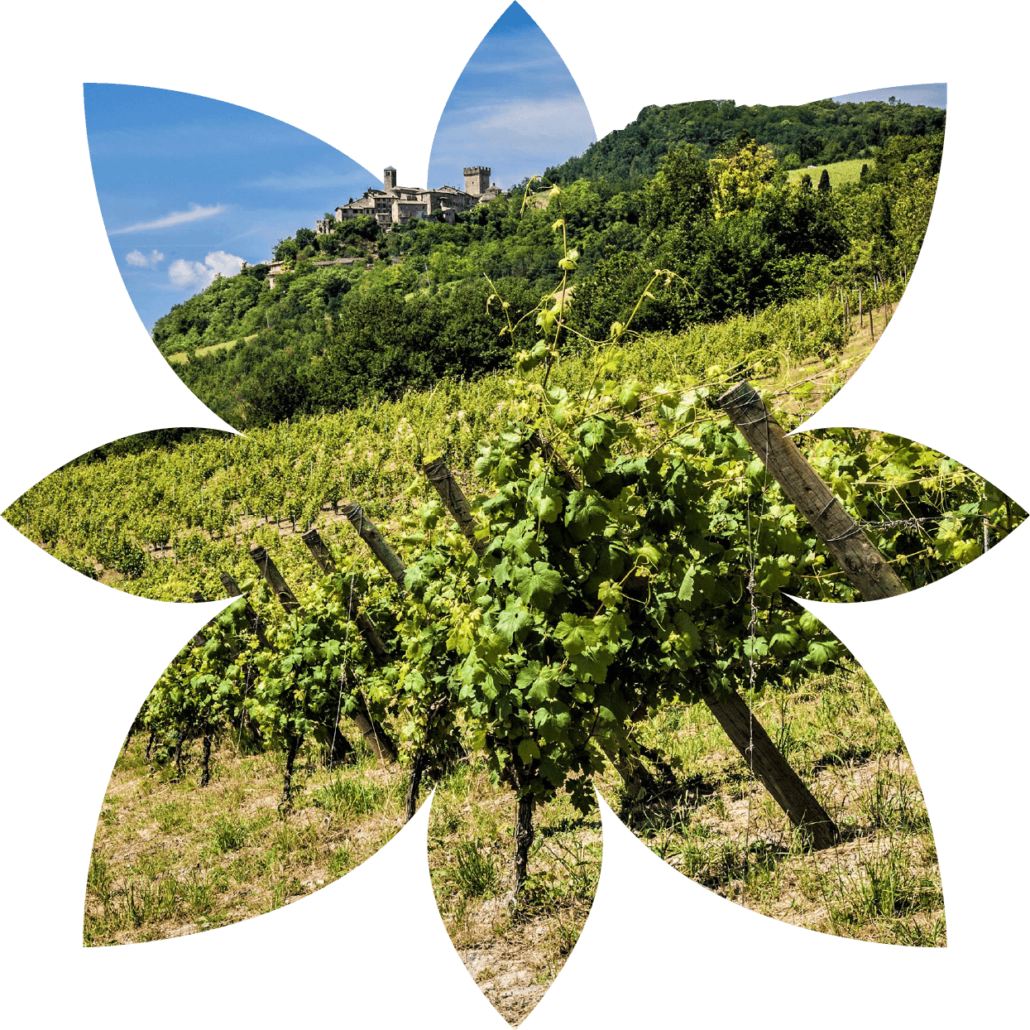VERNASCA SURROUNDINGS

VIGOLENO
The History Of Vigoleno
The village of Vigoleno, a fortified hamlet exceptionally intact in its form and rich in historical evidence, deserves a separate chapter in the history of this area.
LEARN MORE ABOUT THE VILLAGE
The foundations of the original fortress probably dates back to the 10th century, but the earliest historical evidence dates back to 1141, when Vigoleno was an outpost of the Commune of Piacenza on the road to the territories of Parma; around the 13th century it came into the possession of the Guelph Scotti family, in conflict with Piacenza, dominated at the time by Ghibelline factions, who attacked and destroyed the castle during the 14th century. It was the Commune of Piacenza itself that rebuilt it and kept it until the end of the century, when it was destroyed again. The third building was the work of the Scotti themselves, who came back into possession of the fortress in 1389 thanks to the Visconti family: what remains of the castle is largely the result of this 15th-century reconstruction.
Traces of the Scotti family are still visible in the coats of arms carved both above the entrance portal to the village and on the tympanum of the Madonna delle Grazie oratory, most likely the Scotti family chapel, while the Pieve di San Giorgio was the village’s parish church. The Scotti family retained possession of the castle until 1908, after which it was sold and converted into a residential building.
Vezzolacca
Considered one of the most beautiful hamlets in the municipality of Vernasca, at 600 metres of altitude Vezzolacca enjoys a suggestive panoramic view of Lake Mignano below, the gullies of Mount Giogo in the Lugagnano area and the Piacenza plain.
There are currently around 200 residents, but the population of the village increases greatly in the summer due to holidaymakers and numerous emigrants who still return to their home village.
Historical sources have provided us with the history of the village since 1300 when Vezzolacca was one of the consulates owned by the Abbey of Val Tolla and the Leccacorvi family. It is interesting to note that the position of the settlements that now form the hamlet has remained unchanged or almost unchanged since the 13th century. Still today, the village is full of typical buildings (some of which have been renovated and others still in their original form) made of stone with ‘ciappe’ slate roofs, cellars and ovens.
The town is also famous for the produce of its land. The natural predisposition of the soil and the favourable geographic position have lead to the increasing cultivation of potatoes, with excellent results in terms of quality and quantity. The most common varieties are:
- Kennebek, oval in shape with a pale skin and yellow flesh
- Desiree, oval-shaped, with red skin and firm yellow flesh, suitable for all types of cooking
- Spunta, oval in shape, with pale yellow skin and cream-coloured flesh, which does not discolour after cooking
The Vezzolacca potato pie, a traditional baked product whose additional ingredients are shallots, onions, oil, pounded lard, butter, parmesan cheese, milk, flour, eggs as well as salt and pepper, is well-known and appreciated throughout the province. During the Potato Festival (third weekend in August), typical local products can be bought and gastronomic dishes can be tasted at the stands.
Another typical product is chestnuts. This autumn fruit has a strong tradition, as evidenced by the centuries-old chestnut groves on the mountains around the village, from the slopes to the peaks (800-900 m). On average, 80,000 kg of chestnuts are harvested per year.
The lush Vezzolacca forests, the natural habitat of wild boars, also offer truffles and several varieties of mushrooms, the most popular of which is the porcino (boletus edulis).
Bacedasco Basso
Vernasca is located in a barycentric position in the area: to the north of the provincial capital, in fact, the relief slopes down to become soft hills often covered with rows of vines. This is the case in the valley of the River Ongina where Bacedasco Basso, famous for its wine production, is located. Near Bacedasco we also find the picturesque gullies of Monte La Ciocca, part of the Stirone and Piacenziano Regional Park.
Borla
The side valley of the River Borla, from which the nearby village also takes its name, is in the upper part of the valley It is an environmentally interesting area due to the sparse human presence and the dense woodlands, which have the characteristics of a mountain environment (mainly beech forests) at a hilly altitude. This is due to the northern exposure of the narrow valley, which, together with the abundant presence of water, makes the environment particularly cool and damp.
On foot or horseback? Continue exploring the Vernasca area.
Via degli Oratori
ippovia - horseback trail
EVENTS IN VIGOLENO
WE ARE IN THE UPPER VAL D'ARDA
The Alta Val d’Arda is the easternmost Apennine part of the valley in the province of Piacenza, bordering on the province of Parma.
It has the irresistible charm of a land waiting to be discovered: a treasure chest of history, art, nature and flavours, for those who love to travel far from mass tourism.











